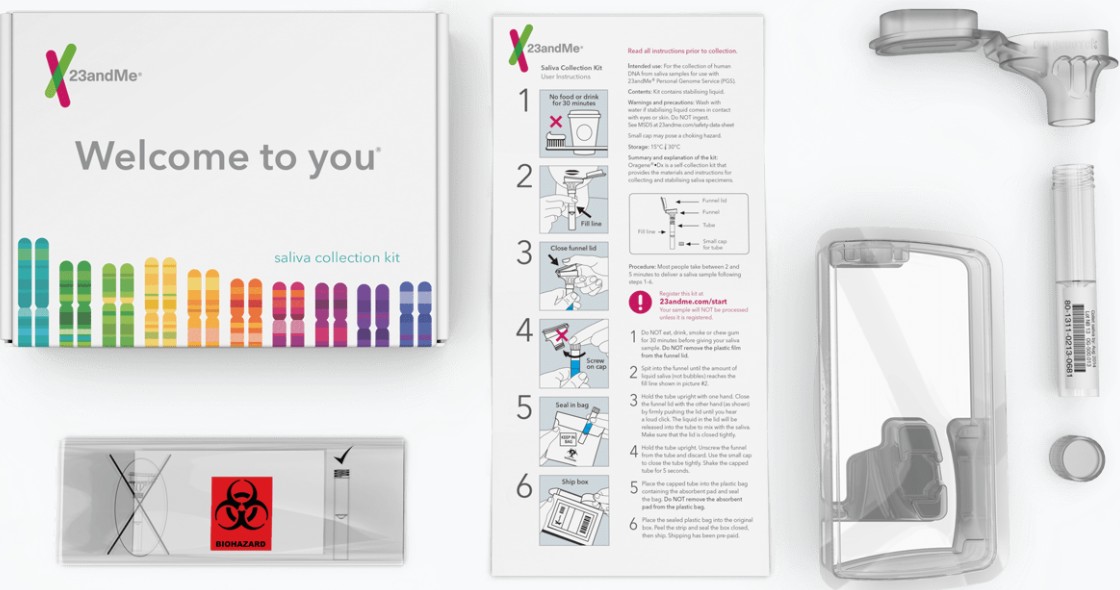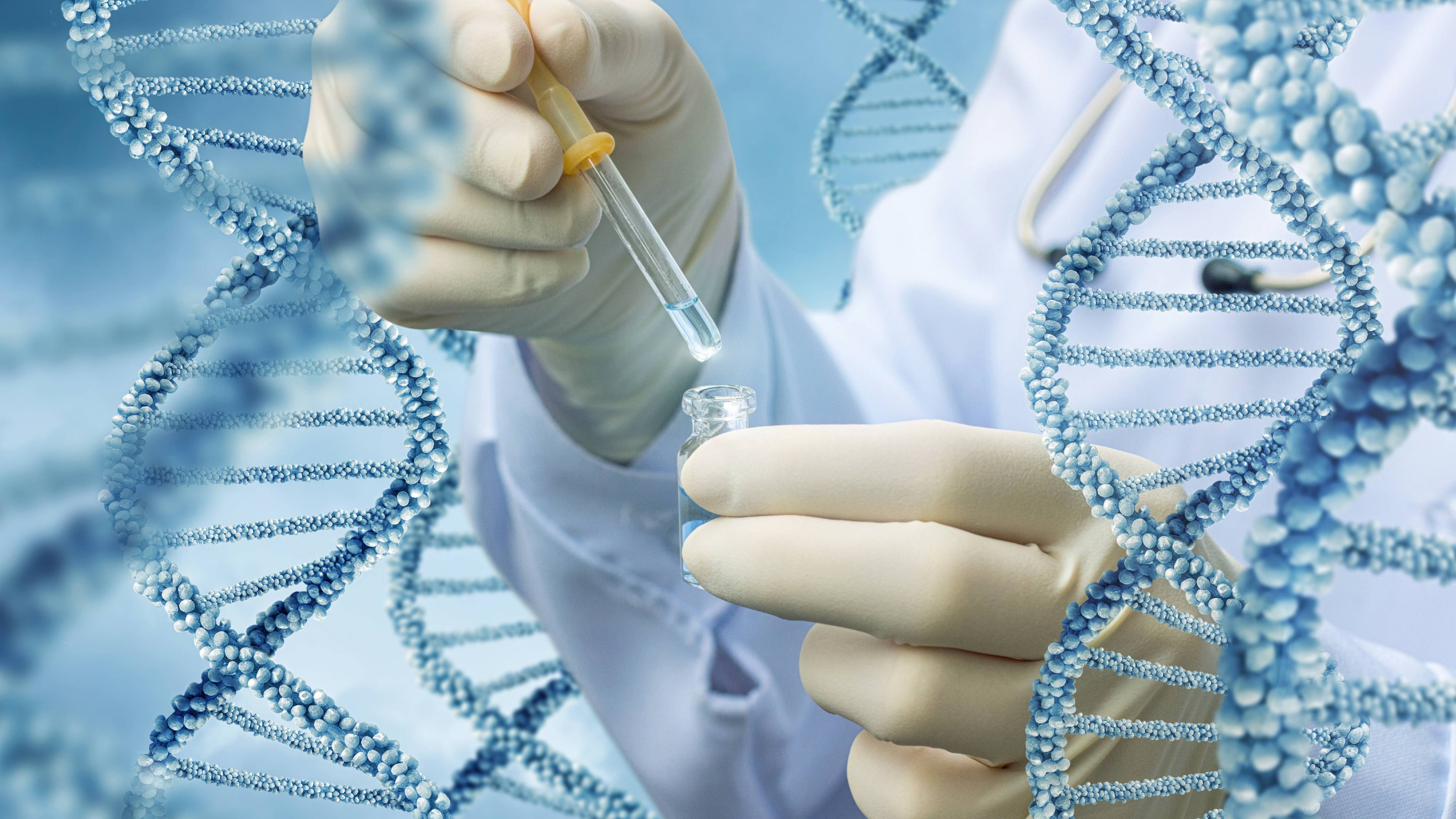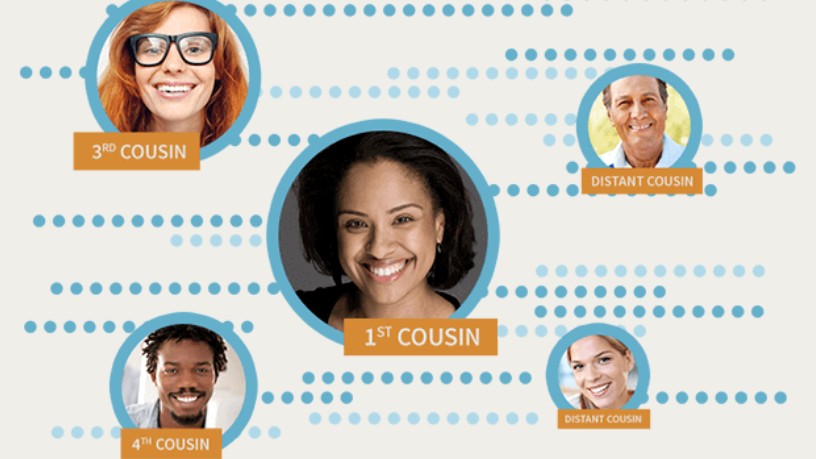How home DNA tests work
How a little bit of spit becomes an insight into everything

Home DNA testing can tell you all kinds of things. It can tell you if you have a higher risk of certain medical conditions. It can tell you where your ancestors came from. And it can apparently tell you if you have trouble smelling asparagus. But how does it actually work?
What is home DNA testing?
There are two kinds of home DNA testing. The first, a home paternity test, is the one you’ve probably seen on downmarket TV shows: it’s a DNA test that tells you whether you’re a genetic match with someone else. The second is much more exciting. It can analyse your DNA sample to help you discover your ancestry and discover living “DNA relatives”, and it can also give you information about your genetic makeup. That can help you identify risk factors, so for example it might let you know if you’re at elevated risk for particular conditions so you can make lifestyle changes accordingly.
How do I get a home DNA test?
All you need to do is choose a testing service such as Ancestry or 23andMe and they’ll send you everything you need in the post. The package will include a kit for getting your DNA sample, a unique identifier and a bag to post the sample back. You’ll need to register the unique identifier online so that when your package arrives at the lab, the lab knows who it belongs to.
How do I provide a DNA sample?
Home DNA testing kits usually require a saliva sample, so for the likes of Ancestry.com or 23andMe it’s just a matter of spitting into a tube. It’s important that you don’t eat, drink, smoke or chew gum for half an hour before. Some services, such as Thriva, use a finger-prick blood test instead.
Can my sample be mixed up with someone else’s?
No. That kind of mistake would be a PR disaster for any D&AD testing firm and they are very, very careful to ensure that it can’t happen. At 23andMe, for instance, their spokesperson told us that, “providing each and every one of our customers with accurate data is a top priority. Our labs are CLIA-certified and CAP-accredited. We must meet certain quality standards, including qualifications for individuals who perform the test, during the processing and loading of genetic data to ensure that we return correct and accurate results to customers. We do not return results unless all data has completed and passed our Quality Assurance Process.”
What happens when the lab receives my sample?
As you’ve probably guessed, it’s a lot more complicated than dabbing a Q-tip into the sample vial and sticking it under a microscope. “DNA is extracted from cells contained in your saliva,” 23andMe told us. “The lab then copies the DNA many times in a process called amplification, duplicating the tiny amount extracted from your saliva until there is enough to be genotyped.”
What does genotyping mean?
Your genotype is your personal DNA sequence, which is almost but not quite identical to everybody else’s. And those differences are crucial, because they make us who we are: they give us our hair and eye colour, our height, our risk factors for certain medical conditions and so on. Genotyping is the process of identifying what those differences are by comparing our genotype with a reference one and seeing what matches and what doesn’t.
Sign up for breaking news, reviews, opinion, top tech deals, and more.
How do home DNA tests do the genotyping?

23andMe took us through the process. “In order to be genotyped the amplified DNA is ‘cut’ into smaller pieces, which are then applied to our DNA chip – also known as a Microarray,” they told us. “That’s a small glass slide with millions of microscopic beads on its surface. Each bead is attached to a probe designed to detect the genetic variants that we test for. The cut pieces of your DNA stick to the corresponding matching DNA probes.”
DNA consists of four bases: Adenine (A), Cytosine (C), Guanine (G) and Thymine (T). Those bases combine in lots of different combinations that effectively act as programs for our bodies to make proteins; the genotyping chip is designed to look for specific versions of that program. As 23andMe explains, if the ‘normal’ version of the sequence is AACGT and you want to find people with a version that’s ACCGT, you’re looking for sequences that match the second one. “A fluorescent label on each probe identifies which version of that genetic variant your DNA corresponds to. Then we analyse your results and provide you with the reports in your secure online account.”
What information do home DNA tests provide?
There are two key kinds of information. There’s ancestry information, which can tell you where in the world your DNA comes from and which can (optionally) be used to connect you with other people with DNA matches. And there’s health information, which identifies specific genetic markers associated with particular conditions such as cancers, degenerative diseases, heart health and so on. Some services provide a third kind of information, which tells you about 'traits' such as food preferences and other features.
How do home DNA tests trace your ancestry?
23andMe explain it like this: “To determine your ancestral breakdown, we use an algorithm that individually looks at short pieces of DNA across your genome. We compare each piece to DNA from reference populations from around the world (i.e. thousands of individuals with known ancestry). When a piece of your DNA resembles the DNA from a specific reference population with a high degree of confidence, it is assigned to that population. As our reference groups grow and technology improves, your results can get more granular.
How accurate are the results?

For health reporting, DNA tests are regulated by the US FDA. “They must meet a high bar for accuracy – greater than 95% concordance with Sanger sequencing, the gold standard for accuracy,” 23andMe says.
Traits and wellness reporting are a little fuzzier. So when a service tells you your propensity for “asparagus odor detection”, hatred of the sound of chewing or fear of public speaking, that’s based more on internal analysis and statistics. 23andMe says it uses two models for trait reporting: a statistical model based on survey responses from people with the same genetic markers, and a curated model based on published scientific studies and survey data.
Will men and women get different results?
Yes. For example, if you’re a man your health report may tell you about your propensity to male pattern baldness and your risk factors for prostate cancer; if you’re a woman, your report may tell you about risk factors for ovarian or cervical cancers.
That may be an issue for trans or non-binary service users, as 23andMe explains. “Transgender customers will receive health reports customised to the sex they’ve self-reported in their profile settings, and these settings can be edited. The information we provide in our health reports is based on the available body of published medical and scientific research, which has generally been conducted with individuals identified as men or women during enrollment for those studies.”
As 23andMe explains, while many diseases’ risk factors are based on our underlying biology, “many disease risk factors are also connected to environment and behaviors, and these are heavily influenced by lived experience.” The treatments many trans people undergo may influence those factors too, so for example trans women on hormone therapy may have a reduced risk of prostate cancer but an increased risk of breast cancer.
What are DNA relatives?

DNA Relatives, sometimes called Genetic Relatives, are other service users who share the same DNA as you. That sharing has to be significant: while we all have short DNA sequences that match other people, longer DNA stretches are more likely to be shared with relatives with whom you share a common ancestor.
According to 23andMe: “Our simulations have concluded that we can confidently detect related individuals if they have at least one continuous region of matching SNPs (Single Nucleotide Polymorphisms) that is longer than our minimum threshold of 7cM (centiMorgans) long and at least 700 SNPs.” In plain English that means there’s a near-100% probability of detecting a first cousin, over 99% for a second and around 80% for a third. The more distant your relative, the less DNA you’re likely to have in common.
23andMe tells you how much DNA you share with your DNA relatives. With an identical twin you’d expect 100% of your DNA to match; for a parent, child or sibling, the average is 50%; for a second cousin once removed, 1.5%.
If you wish, you can contact or be contacted by people whose DNA matches yours: it can be a helpful tool for trying to trace your family tree.
What happens to my DNA data when I’ve got my results?
That’s up to you. All the major home DNA test companies have opt-in research programmes where your data can be used to help with medical research, but your data is not shared with them without your explicit consent. The exception to that is law enforcement: while companies will actively resist fishing expeditions by the police and other relevant authorities, they have to comply with court orders.
If you don’t want the service to keep your DNA data you can request its deletion, but if your data has already been shared with external research projects you can’t recall that data.

Contributor
Writer, broadcaster, musician and kitchen gadget obsessive Carrie Marshall has been writing about tech since 1998, contributing sage advice and odd opinions to all kinds of magazines and websites as well as writing more than twenty books. Her latest, a love letter to music titled Small Town Joy, is on sale now. She is the singer in spectacularly obscure Glaswegian rock band Unquiet Mind.